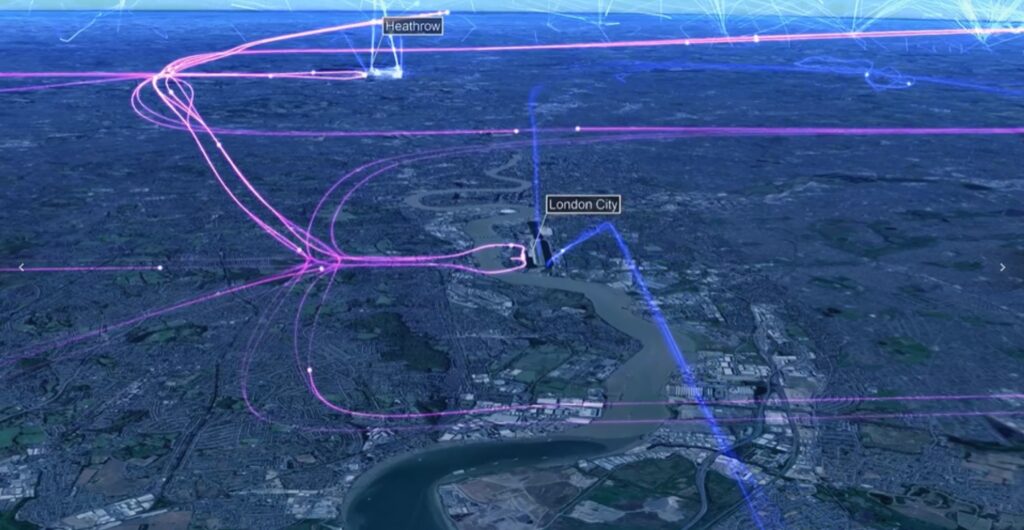NATS Services Releases White Paper, Outlines Recommendations “to Power the Future of AAM”
NATS Services announced this week, the launch of its White Paper which outlines recommendations to assist the growth of the Advanced Air Mobility (AAM) industry, following the success of Project AMEC (part of UKRI’s Future Flight Challenge), reports a press release.
This Project brought together key industry partners to explore how AAM can be safely integrated into UK airspace. “Using advanced simulations and digital twin technology,” explains the release, “NATS Services has validated operational concepts for eVTOLs and drones in controlled and uncontrolled environments that mirror real-world conditions, including within London’s congested airspace.”
Mark Balsdon, NATS Services AMEC Project Lead and Head of New Airspace Users Accounts and Partnerships, commented, “Project AMEC has proven how we can safely integrate AAM operations into today’s airspace at scale. With a proven blueprint, operational model and deployable digital systems, NATS Services is equipped to enable real-world AAM operations now.”
He continued, “Our solution bridges today’s traffic management systems to accommodate new types of users, ensuring safety without stifling innovation. This isn’t just about flying vehicles.” Adding, “It’s about creating smarter, greener transport networks that spark regional economic growth.”

These NATS findings have lead to the development of a Concepts of Operations (CONOPs) and an array of digital solutions designed to support the future of AAM and integrated traffic management. They include the Master Control Room interface, Airspace Manager, and vertiport assessment tools, critical enablers for the safe, scalable integration of crewed and uncrewed aircraft into shared airspace.
Gareth Bowen, NATS Services New Airspace Users Solutions Consultant, remarked, “What we have achieved for both drones and eVTOLs, is integration – developing the technical interfaces with the traditional air traffic management domain which are aligned with the airspace modernisation strategy of the Civil Aviation Authority.”
A key innovation is the Airspace Manager role, which provides the required support to AAM operators, allowing them to file flight plans that can be approved or amended within minutes.
The release continues, “Leveraging sophisticated digital monitoring and pre-flight deconfliction, this capability ensures safe and seamless digital operations without adding to the workload of air traffic controllers. This capability also unlocks the potential for regional airports to evolve into mixed-use vertiports, creating new revenue streams and enhancing operational flexibility.”
It continues, “Sustainability remains a core tenet of NATS Services’ vision for the future of aviation. Project AMEC’s validation using Vertical Aerospace’s emission-free VX4 aircraft offered a tangible glimpse into the potential for eco-friendly urban mobility. Successful test flights conducted within simulated Air Traffic Control (ATC) environments have further validated the real-world feasibility of NATS Services’ integrated traffic management technology solutions.”

Other key findings highlighted by NATS include investing and developing infrastructure to keep pace with the expanding transport network and establishing ‘rules of the sky’ appropriate for a new age of digital, lower airspace traffic management.
To learn more about Project AMEC and explore the recommendations for the future of integrated airspace management, download the White Paper here.
For more information
(Images: NATS Services)
For the latest news, insights and content regarding the global Advanced Air Mobility market, please join the following eVTOL Insights channels: WhatsApp, Facebook, Instagram, Spotify, Apple Podcasts, YouTube, X and LinkedIn.


